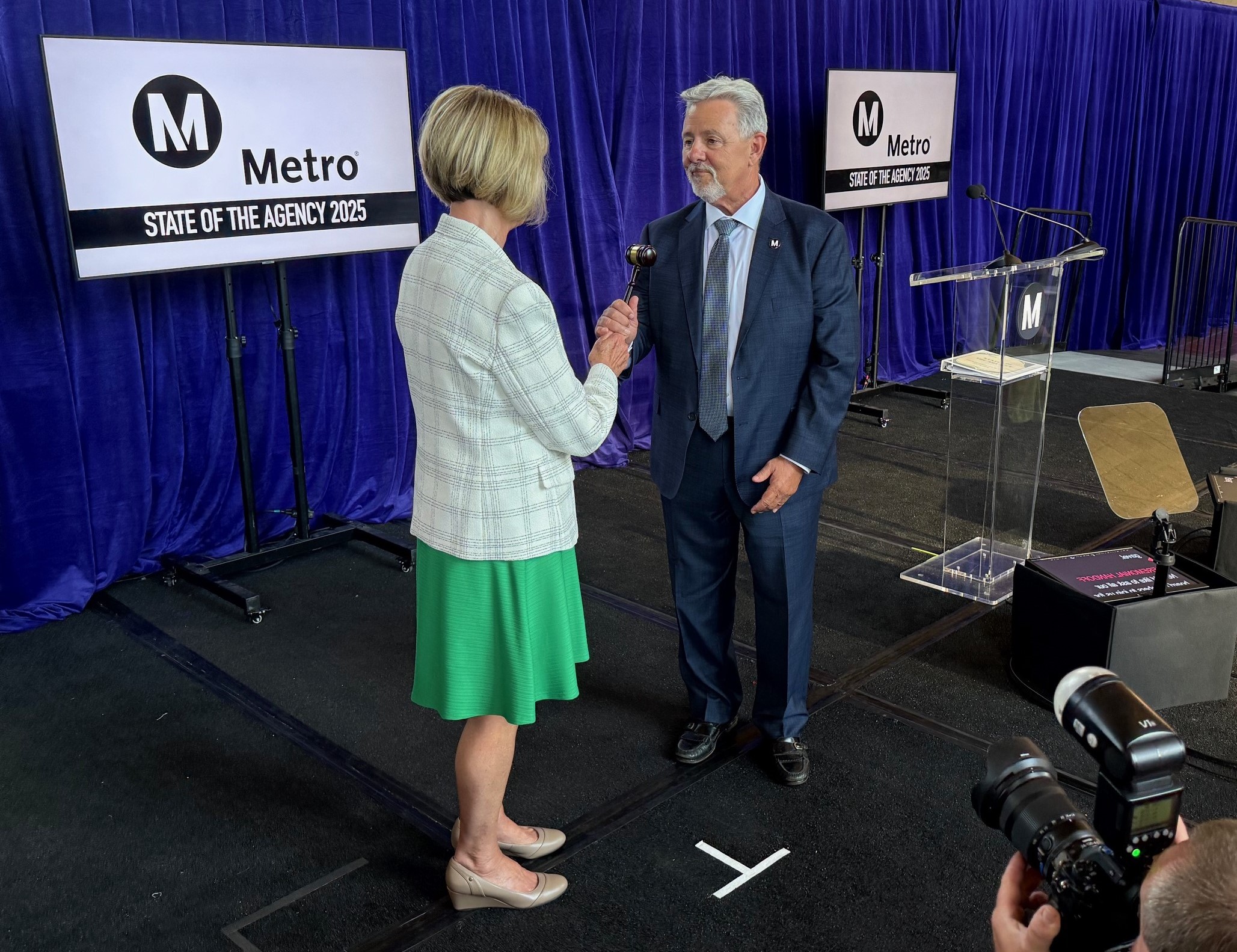
Last October, the RAND Corporation, a non-profit think tank that is headquartered in Santa Monica, released a report containing thirteen ideas for improving traffic flow in Los Angeles. RAND's suggestions have less to do with speeding up traffic and more to do with controlling traffic demand, increasing transit and other alternative transportation usage and increasing the ways we fund transportation.
After first discussing the proposal last November, the City Council is finally ready to do something with the report, even though it's just asking the LADOT to study RAND's proposals and do what they can with them. The council will be voting on them during tomorrow's meeting.
In some cases, the LADOT won't have a lot of work to do because the new curbside parking plan that RAND proposes seems awfully similar to what the LADOT has already done. In other cases, the council has seemed interested in pushing for enforcement of the state law requiring businesses of more than 50 employees to have a "Cash Out Parking" program, but may come up with a more feasible plan if htey give it a second look.
RAND's thirteen suggestions, which are as a whole far superior to the ideas to improve transportation that the Councilmembers came up with on their own, can be found after the jump.
- Install
curbside parking meters that charge more during peak business hours for
parking in congested commercial and retail districts. - Enforce the existing California state law that allows
employees to "cash out" the value of their parking spaces. Companies
with more than 50 employees who lease parking are supposed to offer
their employees the option of cash instead of free parking, but this
law is not enforced. - Implement local fuel tax levies at the county level to raise transportation funds.
- Develop a network of high-occupancy/toll lanes on freeways throughout Los Angeles County.
- Evaluate the potential for implementing tolls on those
entering major activity centers, like those that exist in London and
Singapore. - Expand rapid bus transit with bus-only lanes on arterial streets and express freeway service in the high-occupancy/toll lanes.
- Offer and aggressively market deeply discounted transit passes
to employers, who would purchase passes for all employees, allowing
those who commute by transit to ride at reduced cost. - Develop an integrated, region-wide network of bicycle pathways.
- Restrict curb parking on busy arterial streets.
- Convert selected major surface streets to one-way streets.
- Prioritize and fund investments in upgraded signal timing and control.
- Bolster outreach efforts to assist businesses in promoting ridesharing programs, telecommuting and flexible work schedules.
- Evaluate the costs and benefits of implementing a regional
incident management system on the arterial streets to reduce congestion
caused by traffic accidents.
Photo: Sara/Flickr






